| Revista Umělec 2006/1 >> Digital Intifada | Lista de todas las ediciones | ||||||||||||
|
|||||||||||||
Digital IntifadaRevista Umělec 2006/101.01.2006 Vít Šisler | Middle East | en cs |
|||||||||||||
|
In August 2005 the PC game Tahta al-Hisar (Under Siege), which according to its authors accurately copies the events of the Palestinian Intifada, was released in Damascus. The game, whose release was delayed for more than a year, had previously received very controversial coverage in the media. On the basis of a short text and a few screenshots published on the web, it was presented as a propagation of terrorism (Jerusalem Post), extension of the ideological conflict into cyberspace (BBC) or the first dignified answer to the flood of Western anti-Arab games (Jareedatu-l-Arab).The authors themselves speak about a breakthrough of stereotypical thinking on both sides, about a dialog between the West and the Arab world. A similar controversy is not surprising, the theme of the ongoing conflict carries an inevitable argument about its perception. The following text maps the authors’ work up to now on the game Tahta al-Hisar, from the Syrian studio Afkar Media, and puts it into a broader context of politics and political videogames.
PC games today often exploit real historical situations and present-day conflicts, and thus influence their understanding and evaluation. The theoretical reflection of a possible ideological influence of the games has been going on for some time – already the archaic Tie Fighter simulator (LucasArts, 1994) from Star Wars had been fiercely criticized for its accurate appropriation of the Nazi aesthetics and for the attractiveness hidden in the depiction of the milieu of elite fighter pilots of the Empire – that means the ideologically mistaken, dark side of the fictitious conflict. Today the ideological and propagandist games are designed to order – the series of American games Kuma/War justifies the war in Iraq, the Russian government subsidizes the development of patriot games in a long-term program “Ready for Work and Defense of the Motherland!” and the Lebanese movement Hezbollah develops games and teaching programs for children. (In 2004 a compilation was released under the title Fata al-Quds, The Children of Jerusalem. In it there are mutations of classic games from the 80s like Pacman or Space Invaders, where the players are attacked by stars of David or huge spiders with Ariel Sharon’s face. In the opening clip “Jerusalem belongs to us!” children bury the Israeli flag.) Next to official propaganda, PC games are a popular media of political and social activism. Gonzalo Frasca and his studio Newsgaming attracted a lot of attention in 2003 with their satirical simulation September 12th, which criticized the way the war against terror is led. A group of Italian activists, la Molleindustria, regularly publicizes on their pages short flash games, which renders ironic the approach of huge corporations to their employees or homophobic tendencies in society. In contemporary art the use of PC games is an everyday phenomena. The mutual intertwining is realized on more levels, from the use of videogames and their aesthetics in a work of art (e.g. Petra Vargová and her clip Dead or Alive 2 from 2001, where the artist plays one of the characters of the game), via games (e.g. Martin Bricelja’s web-memory game called Memory, made of digital photos capturing the artist’s everyday life) to the introducing of art into already existing games (e.g. in the form of performance shown in the virtual online worlds or published as art modifications of classic games). A fact worth mentioning is how often the games are used in art for political subversion and how they play with the topics of ideological conflicts, hegemony and manipulation. Zorka Lednárová and Ján Hreno created a strategic game, in which cultural dominance is fought for via writing systems (Signs & Locations, 2005), in 2003 Robert Praxmarer combined the scanning of a viewer’s movements with a simple action game in his installation with the title (t)Error, in which he put the players into the roles of G.W. Bush, Osama Bin Laden or Tony Blair. Similarly the project Civilization IV, by the group Eastwood from Serbia and Montenegro, used the concept of a well-known strategic game to show the function of the present-day information society in which there are also the mechanisms of industrial espionage, government surveillance, the porn industry and terrorism. The artists’ inclination to the topics mentioned comes—to a certain degree—from the nature of the medium – conflict and politics, creates the framework of most action and strategic games. The perception that video games are trashy has some influence on this. In this way, the subversion in the use of it is the art itself. The interest in the manipulative and ideological aspect of the games become apparent in the retrospective investigation of mainstream production. The usual computer games are rated from the point of the constructing of social models and heroes (especially the gender and race aspects) or ideological presentation of the world (mostly action and strategic games dealing with present day conflicts). In recent years this theme has received a lot of attention in the Arab and Islamic world, where many authors point to the negative influence of stereotyping Arabs and Muslims as fiends or terrorists (e.g. in the games America’s Army, Delta Force or Command & Conquer: Generals). At the same time attempts to create their own political games are appearing. Afkar Media The company Afkar Media was founded in Damascus in 2003, by former members of Dar al-Fikr publishing’s electronic division and SuperSoft, a software company. Their work is to design electronic presentations, web pages and to create PC games, whose sales only pay for development expenses, according to their manager Radwan Kasmiya - software is almost free in Syria, the price of the program is given by the total of the price of the medium and a small commission for the retailer who burns the programs on their PC. The Arab programs and games can thus be sold for a very low price only. Afkar Media consider game development as their mission. On their web pages they say, “Our goal is to address people in the whole world and to enable them to see the peaceful truth coming out of our civilization and religion and to thus stop the spreading of the negative media image. Our goal is to address Muslims and Arabs in a way respecting their cultural heritage. We want to help them to feel equal to other nations so that they can develop into a civilization which will enrich the surrounding world and not only take from it.” On the same pages it is written that Afkar Media is trying to contribute to the propagation of the Islamic message (nashr risala islamiya). But the question of whether they work with da’wa (propagation of the Muslim faith) Radwan Kasmiya answered negatively. He said that in the company there are a few Christians, that everyone’s faith is a personal thing and he himself rejects the concept of proselytizing. A certain inconsistency between Afkar Media’s promotional material, the tone of their games and their personal interviews are a necessary result of the effort to present oneself positively in a set of various and differing environments – to the Arab public, to the Western media and to the potential Muslim sponsors. The first game which was supposed to serve the given goals was Tahta al-Ramad (Under the Ash) from 2002. A technically easy action game was unusually emotional in the way it presented players with a story starting with the Palestinians conflict with Israeli soldiers at the al-Aqsa Mosque in Jerusalem. The first mission of the game starts with the main hero, Ahmad, in a demonstration. The Palestinians throw stones at the Israeli soldiers who answer with rifle shots, the scene is full of shouting, shooting and moaning of the wounded. The task of the player is to get out of the demonstration alive and to get to the al-Aqsa Mosque. With street fighting even there, the player must first help a wounded friend and then he himself is attacked by an armed soldier, whom he knocks out and keeps his weapon. Then the story goes on in the classic scheme of action games. The hero, as a wanted criminal on the run, joins the resistance movement and continues to fight against the Israelis. Unlike usual action games Tahta al-Ramad brings real events into the virtual world, it shows demolitions of Palestinian houses, humiliation at checkpoints or the conditions of Israeli jails. But the reality is depicted in a very selective way, so in a world offered by the game we won’t find any victims of suicide attacks. According to the authors Tahta al-Ramad is a “call for justice and realization of the truth, the prevention against the wrong and aggression.” Supporting materials introduce the story with these words: “The Palestinian nation is dispossessed; their homes are being torn down, the land is taken, trees fallen, property confiscated, cities besieged... they are put into jail, tortured, killed. The world ignores them, no one hears their cries, no one cares about their rights.” The game is meant as a support of Palestinian rights and the same way it is understood by Arab people. Worth mentioning is, that in the above-mentioned shops, Tahta al-Ramad is really sold, as one of just a few games not copied. The direct continuation of Tahta al-Ramad is a recently released game called Tahta al Hisar (Under Siege). The graphical presentation and the way the story is interpreted are on a much higher level, much clearer is the profiling of the politics of the authors. Most important is the first mission again, using a real event. During Ramadan in 1994 a radical Jewish fundamentalist Baruch Goldstein shot 29 praying Muslims in the Mosque of Abraham in Hebron, and he wounded about 100 other people, before people disarmed him and killed him. The player is Ahmad again, at the time of the massacre one of the people praying. He has to survive the first minutes of Goldstein’s shooting hidden between pillars and in the right moment disarm him. Other missions are based on unrest between the Israeli army and the Palestinians shortly after Goldstein’s death. Ahmad, with Goldstein’s weapon in his hand, tries to run away from the region, later there are sabotages against the Israeli army, pursuits, shootings in army jeeps and a kidnapping of an Israeli general. Both games have ideological tones in the narrative structure of the game. Crucial is the construction and genesis of the main hero Ahmad, who in the manual is a fearful person, reconciled to the life of a second-rate citizen who refuses violence. Not only in Tahta al-Ramad, but also Tahta al-Hisar at the beginning of the game he is exposed to an attack and he is forced to defend himself, which legitimizes further violence. In the second case it is a religiously motivated terrorist attack in the course of prayer, where the abjectness of the aggression and the innocence of the victim are clearly defined by the game. (In fact the circumstances of the Hebron massacre are still a hot issue, Israeli sources saying that there were weapons in the mosque and according to the secret service the same day an attack against Jews had been planned; on the other hand survivors claim that Goldstein was helped by two Israeli soldiers.) Afkar Media state on their pages: “No one can change the violence of a tyrant and aggressor with the violence of a resistance in self-defense.” The topic of the Palestinian victim and legitimity of the rightful resistance is a leitmotif of both games. The player always fights against soldiers, and if he injures a civilian, he loses. The conflict is depicted on a symbolical level as well; in the mission David and Goliath the player controls a small boy Ma’an, who with his friends throws stones at an Israeli tank; after he manages to steal the Israeli flag from it, he is killed by the soldiers. The scene is very suggestive and there is again a certain manipulation into the skirmish, at the beginning a friend runs for Ma’an because their friend has been gunned down by the soldiers and needs help. From this point of view it is interesting to compare the Afkar Media’s games with another Arab action game which deals with the Arab-Israeli conflict – Al-Quwat al-Khasa (Special Forces), a promotional game of the Hezbollah movement from 2003, which speaks about the Israeli occupation of Southern Lebanon and glorifies the role of Hezbollah in the retreat of Israeli Army. Al-Quwat al-Khasa constructs various types of heroes. The first is a figure controlled by the player, a fearless warrior winning, though outnumbered by Zionist forces, the second are his fallen friends, the real fighters of Hezbollah. In the whole game they are consistently marked as martyrs (ash-shuhada’), and the player slowly finds their photographs, allegedly on the places where they really died. The game is just like common action games built on a concept of the lone invincible fighter and it is full of the atmosphere of sacrifice and victory. The link between a computer game and the real sacrifice of fallen soldiers appears only in one of these persuasive games, the above-mentioned Kuma/War. Its authors give a part of the profit to The Intrepid Fallen Heroes Fund, devoted to the families of American soldiers killed in the service to the homeland. The action game in which the hero hides at the beginning and tries to avoid combat – as is the case in Afkar Media’s games – is in its sense unique and offers the possibility of a stronger identification with the hero, who is a normal human being confronted with a reality he cannot change. A true story or political propaganda? The work of Afkar Media in the field of political videogames is special, because the authors realize their media image and intentionally work with the themes of manipulation and propaganda. The freely accessible demo on Tahta al-Hisar introduces the game with a slogan: “A true story or political propaganda? You have the right to decide.” Afkar Media’s presentation clip, which the company sends to its prospective clients, starts with a mass call of “Allah Akbar” (a scene from the prayer in the first mission of Tahta al-Hisar) which will surely have a different influence on Muslim consumers and on Western viewers, but in both cases it calls for attention. A short montage of news about Afkar Media follows, with captions describing their games as political manipulation not being omitted. On their pages they collect reactions of Americans or Israelis too. On the other hand the above-mentioned games of the company Kuma/War, a recruitment game of the US Army (America’s Army, 2003) or the Hezbollah’s game, Al-Quwat al-Khasa, which all show a clearly ideologically loaded picture of real conflicts consistently claim they are independent and based on reality. The games that openly work with the theme of political manipulation are themselves rarely engaged or politicallt persuasive. The action game Halo 2 (Bungie Studios, 2004) is about the distant future, where a conflict between people and intelligent aliens takes place. The story is shown step by step from the view of a human and an extraterrestrial infantryman. The game has a limited version, with printed material written only from the perspective of extraterrestrials with a completely different description and evaluation of the conflict. The parallel reading of both versions gives the reader the same feeling as the parallel watching of the war in Iraq on Fox News and al-Jazeera. Although the designers of Afkar Media open up the theme of propaganda and their own politics they in fact use the same manipulative means as the games they define themselves against. First of all it is about a legitimization of their own understanding of reality stressing the truthfulness of the presented stories. Kuma/War offer with every mission a broad set of newspaper news, analyses and satellite photos which the authors used while designing the mission, Tahta al-Hisar show the mission with newspaper clippings, photographs and spoken commentary. In both games emphasis is put especially on the convincing details which, however, have no deeper meaning from the perspective of bias or non-bias of the game, e.g. to the topographic correspondence of the game and real world (the surrounding of the hideaway of Saddam Hussein’s sons Uday and Qusay in Kuma/War; the Jenin refugee camp or Mosque of Abraham in Tahta al-Hisar). Radwan Kasmiya told me that they are aiming to balance cultures and to build a bridge between the West and the Arab world. It is difficult to consider Tahta al-Hisar as a means to this end. The game’s best contribution is as a presentation of a frame of reference which is unusual in Europe. At the same time it opens topics which are not spoken about much (e.g. the action against Palestinians in Hebron after Goldstein’s attack, the torturing of people being interrogated by the Israeli secret service or the repressions on the relatives of those arrested). If they are trying to break through the familiar stereotypes, then Tahta al-Hisar effectively disturbs the picture of Palestinians as terrorists and suicide bombers, but at the same time it construes and strengthens another one, a stereotype of victims forced by the circumstances to violence. A much more important deficiency is the stereotyped depicting of Israelis who are presented in the game entirely as aggressors, armed soldiers or policemen. (According to Kasmiya in some missions are also Israeli civilians who the player mustn’t attack; I haven’t found them in the first part of Tahta al-Hisar, which is on the market now, while the second is now in preparation.) The principle of the game in itself excludes any other interaction except for a fight, and another perception of Israelis than enemies. The final titles of Tahta al-Hisar are tinged with a song, whose lyrics are a kind of a prayer for peace in Palestine, but the game itself has nothing to do with peace activism. In light of the declared goals it is legitimate to compare it with other games which according to their presentation try to be a similar bridge in the uneasy dialog, e.g. the teaching game, PeaceMaker, by the team of Entertainment Technology center from Carnegie Mellon University. The complex game, in which historians, political scientists and activists work, offers a simulation of the roles of the Israeli prime minister and the Palestinian president and promises the truest reflection of the reality of the Israeli-Palestinian conflict. The target group should be the Israeli, Palestinian and American students – what the real use of the game and its contribution will be, is hard to foretell, but the authors aim higher than Afkar Media, although there are some similarities in the verbalized objectives. While describing their work we must realize in which conditions Afkar Media functions. The relationships of Arab society to the question of Palestine is a bitter mixture of sympathy, irritation, humiliation and a feeling of shame for not being able to help. In the introduction I wrote that the Tahta al-Hisar’s release was put off for more than a year. The reason was the difficult negotiation with the distributors in individual countries, who had objections to various aspect of the game, e.g. that a Palestinian on the package box is facing a fighter chopper with a rocket launcher in his hand; the distributor wanted the man to hold a symbolic stone only. Although the original version survived, Afkar Media are forced to compromise if they want to do well in the Arab market. I look with great expectation to their upcoming strategic game, Quarish, which can be a kind of a tolerance test towards the games depicting sensitive events in Islamic history. The reactions to the first game, Tahta al-Ramad, were allegedly 90% positive, although a few letters written from orthodoxic-religious positions blamed the authors, e.g. for the use of music was condemned (according to the strict interpretations of Islam music is completely unwelcome). Quarish goes much further in this respect, in the story there are a few revered Muslim figures and how they are presented will be surely investigated closely in Muslim society. A part of the game even puts the player into the role of a leader of a pagan Bedouin tribe which in one mission in a battle at Medina finds itself on the side of the enemies of Islam. The player has a chance to embrace Islam and to join the side of the Prophet, or to refuse and go on in the siege of Medina. In fact in this fight the primary Islamic community stood the test, but if the player doesn’t make the expected decision and doesn’t join the Muslims, their victory can lead to a halt of the spread of Islam. Radwan Kasmiya claims that they want to show early Islamic history as accurately as possible without legends and superstition. Such an approach doesn’t always have to be in accord with the folk Islamic devotion and might face a harsh critique. In the West Afkar Media has to deal with a totally different perception. The European reaction to Tahta al-Hisar often stated with relief that the game, though dealing with Palestine and being of Arab origin, refuses suicide killings and attacks against civilians, as if it were logical to expect the opposite. A similar approach speaks more about the authors of the text than about the game reviewed. The games arising in the Islamic world are perceived as dubious themselves. A recent text in the New York Times harshly denounced the game Ummah Defender by the company IslamGames for spreading religious hatred. The company IslamGames focuses on the production of Islamic games, mostly graphic quizzes, in which children put together al-Fatiha from letters or learn the Qur’an. The afore-mentioned Ummah Defender is a very simple action game dealing with a fight with robots who attack the Earth. The introductory message, which started an alarming reaction, says that in the distant future all of humankind will embrace Islam. The game has surely an ideological implicit meaning but not much more than the usual Western action games, in which the united Earth of the future is clearly today’s Euro-American civilization. Really aggressively manipulative games are created in the Near East, but the West doesn’t know about them much (e.g. the already mentioned Fata al-Quds from the Lebanese Hezbollah). The up to now published works of Afkar Media balance between a legitimate presentation of their own view and a political manipulation and the declared goals sound much more exalted than their games in reality are. In the context of Syria and Arabia it is a unique attempt to grasp an influential medium and to participate thus in creating your own media picture. The construction of the Arab and Islamic heroes in video games is a key part of the ongoing digital emancipation of the Near East, which – although it evokes more concern in the West, it will surely go on and can markedly contribute to the reflection of how our video games depict “the Other and Foreign.”
01.01.2006
Artículos recomendados
|
|||||||||||||
|
04.02.2020 10:17
Letošní 50. ročník Art Basel přilákal celkem 93 000 návštěvníků a sběratelů z 80 zemí světa. 290 prémiových galerií představilo umělecká díla od počátku 20. století až po současnost. Hlavní sektor přehlídky, tradičně v prvním patře výstavního prostoru, představil 232 předních galerií z celého světa nabízející umění nejvyšší kvality. Veletrh ukázal vzestupný trend prodeje prostřednictvím galerií jak soukromým sbírkám, tak i institucím. Kromě hlavního veletrhu stály za návštěvu i ty přidružené: Volta, Liste a Photo Basel, k tomu doprovodné programy a výstavy v místních institucích, které kvalitou daleko přesahují hranice města tj. Kunsthalle Basel, Kunstmuseum, Tinguely muzeum nebo Fondation Beyeler.
|








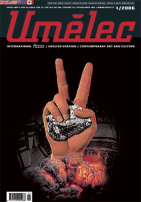






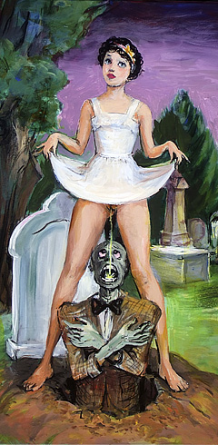











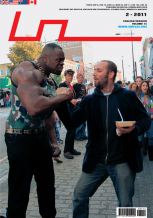
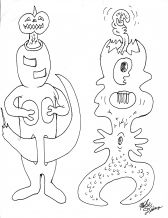
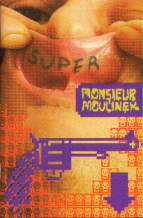
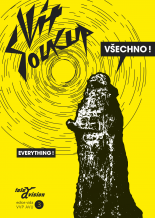


 New book by I.M.Jirous in English at our online bookshop.
New book by I.M.Jirous in English at our online bookshop.
Comentarios
Actualmente no hay comentariosAgregar nuevo comentario